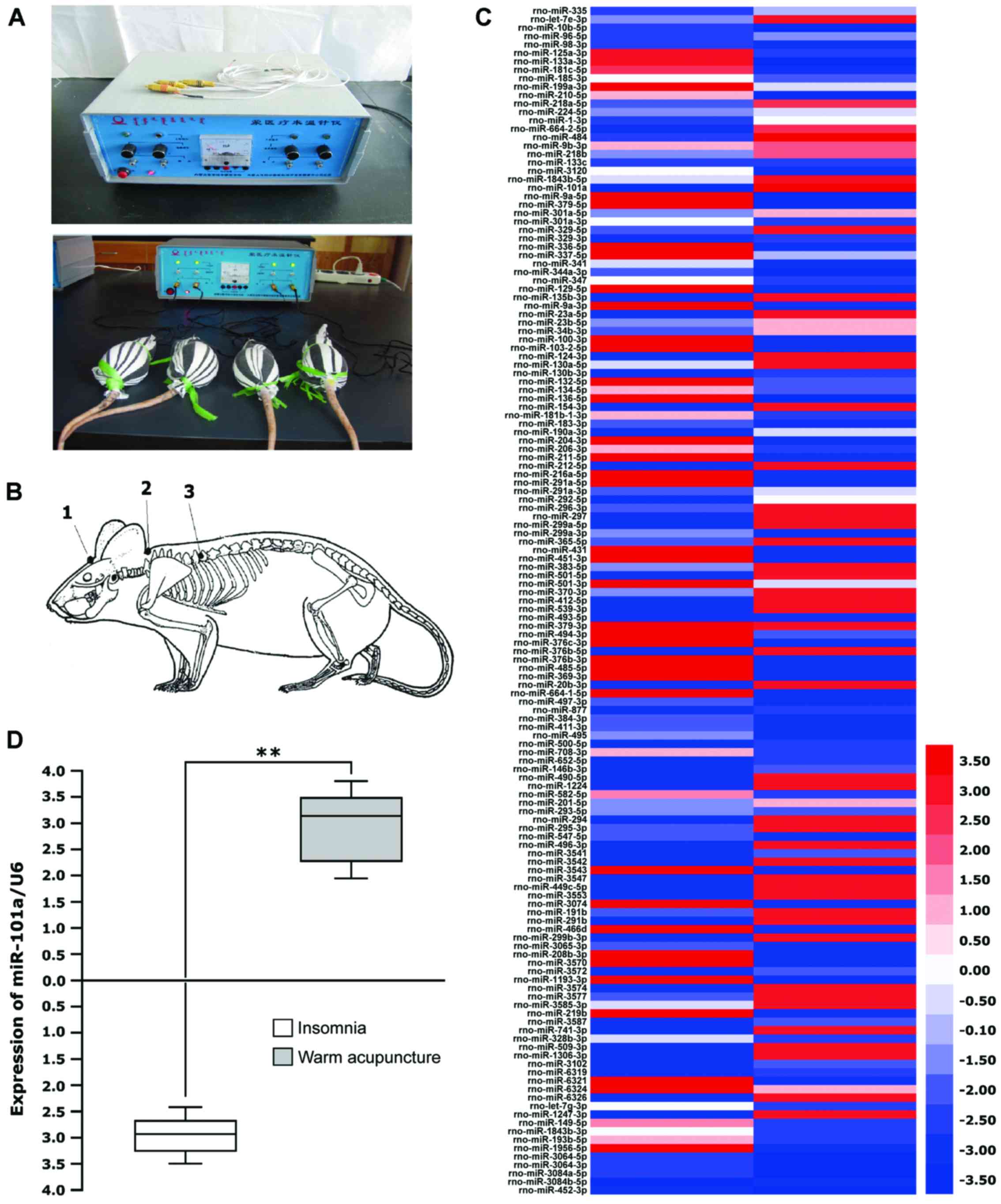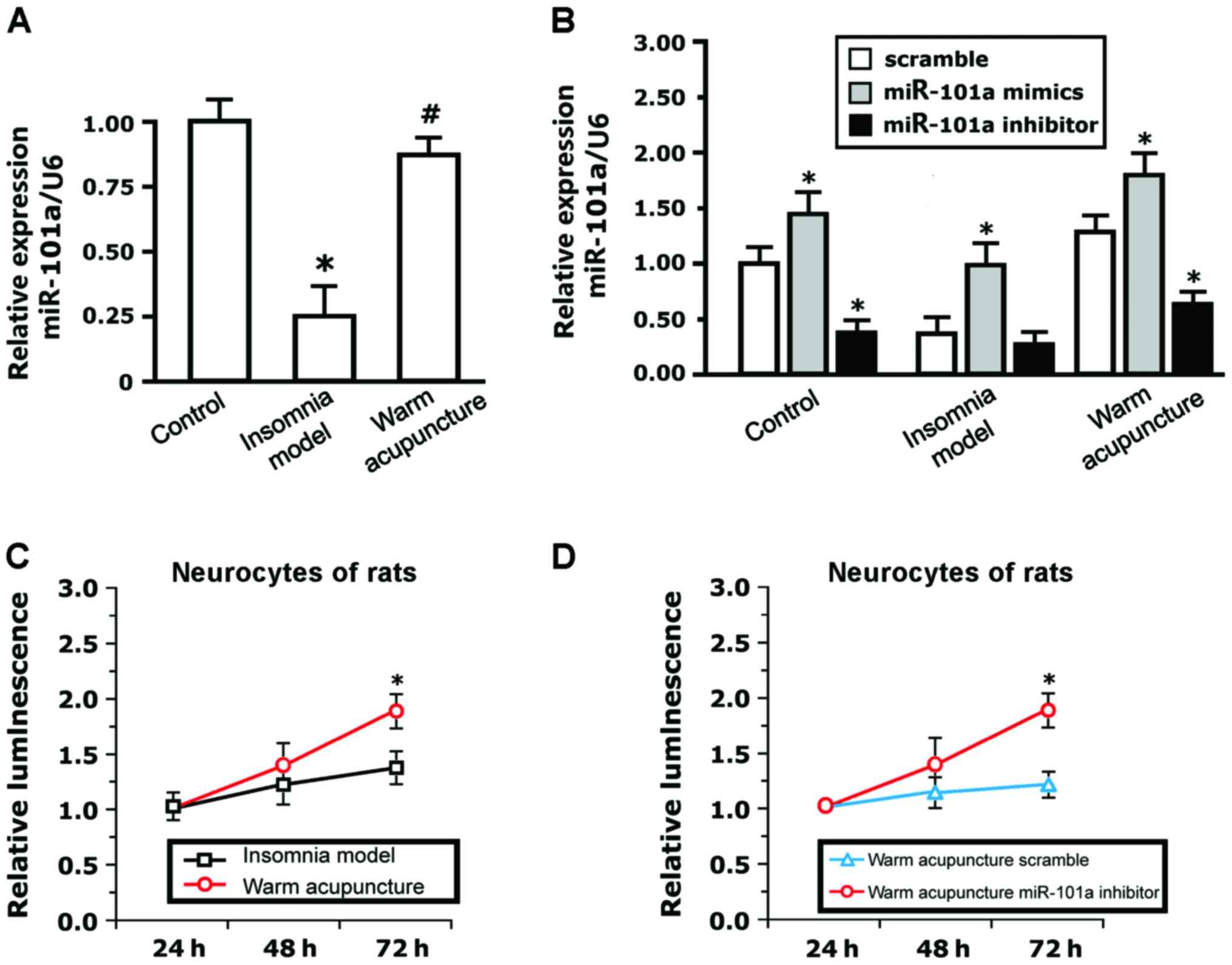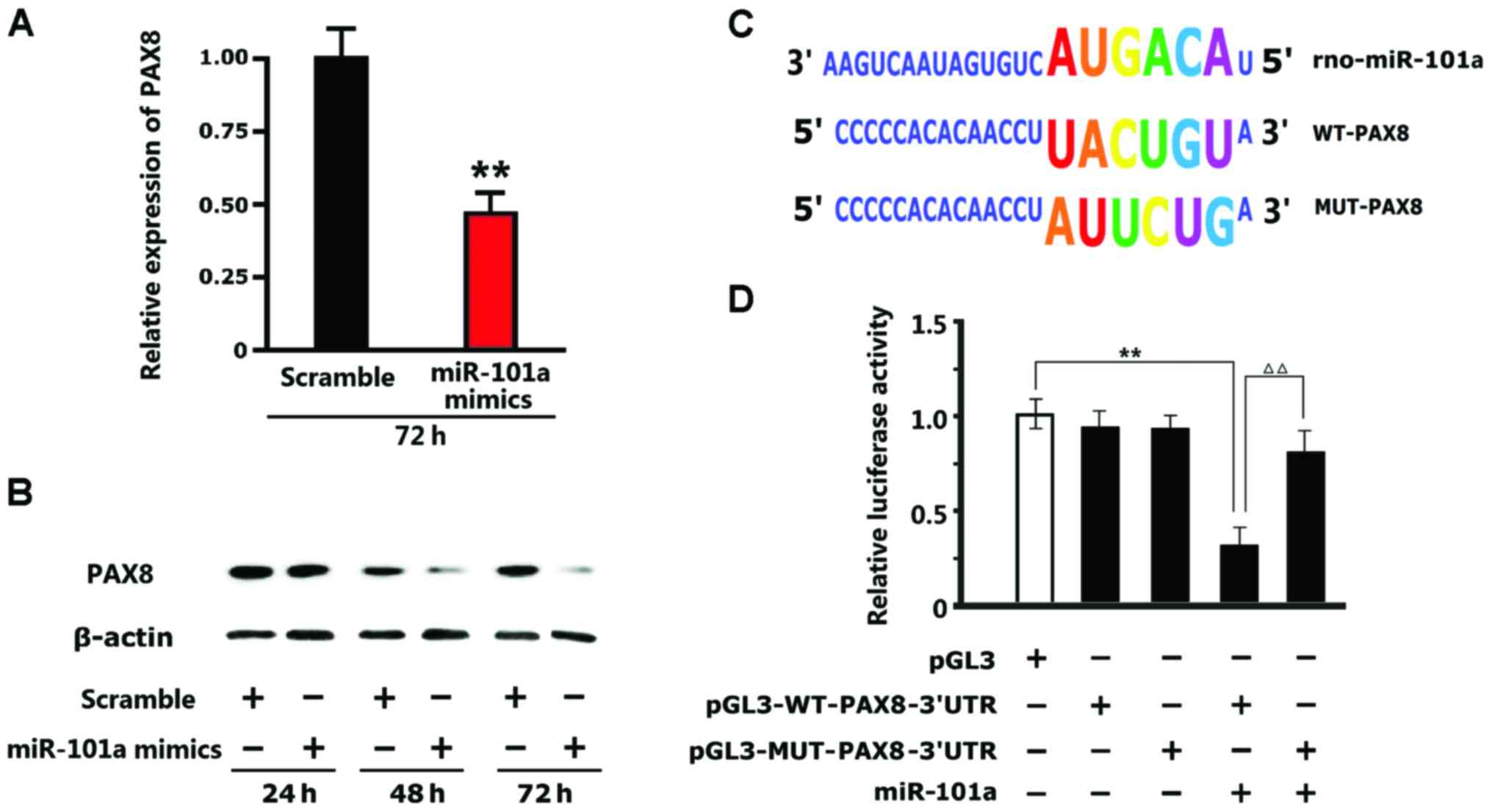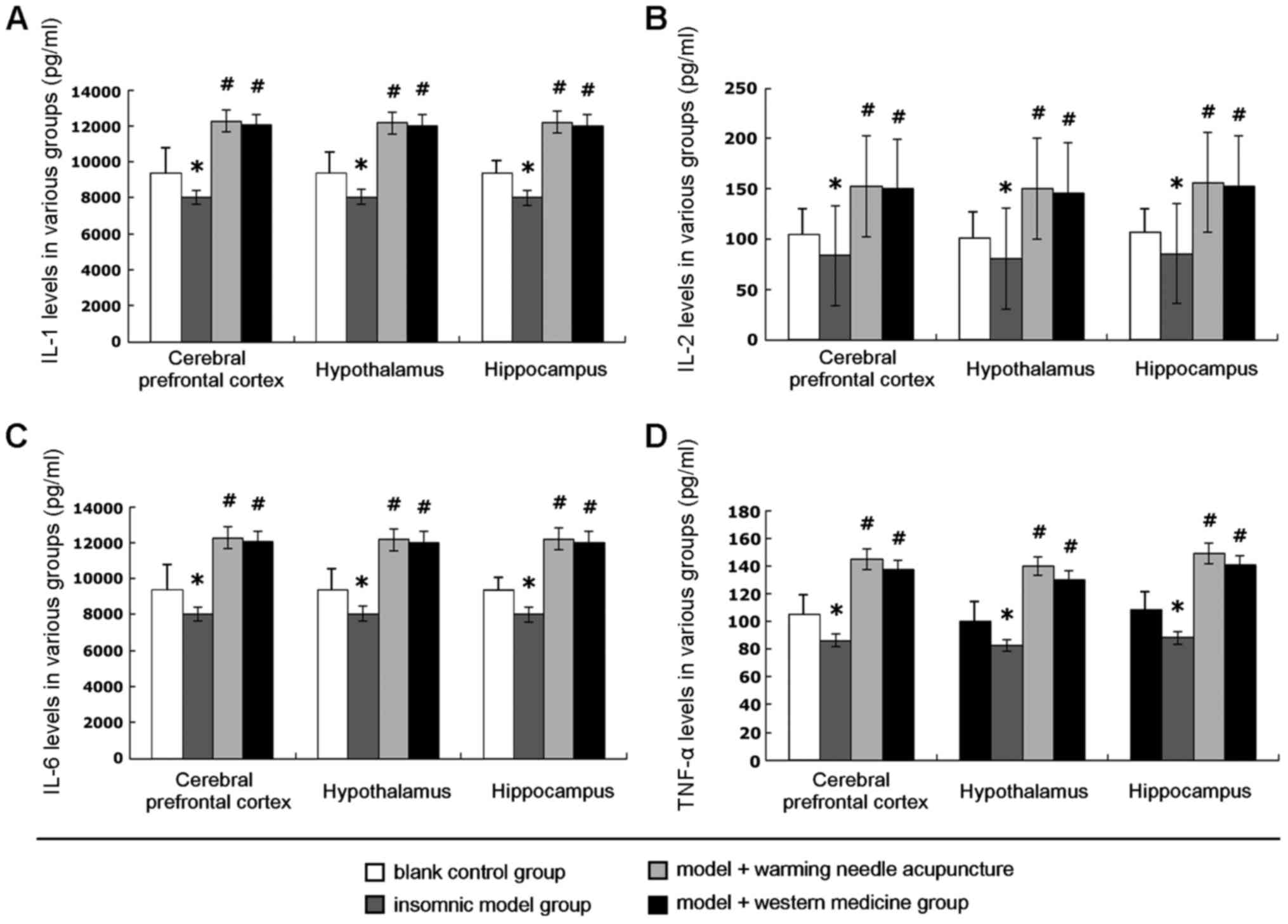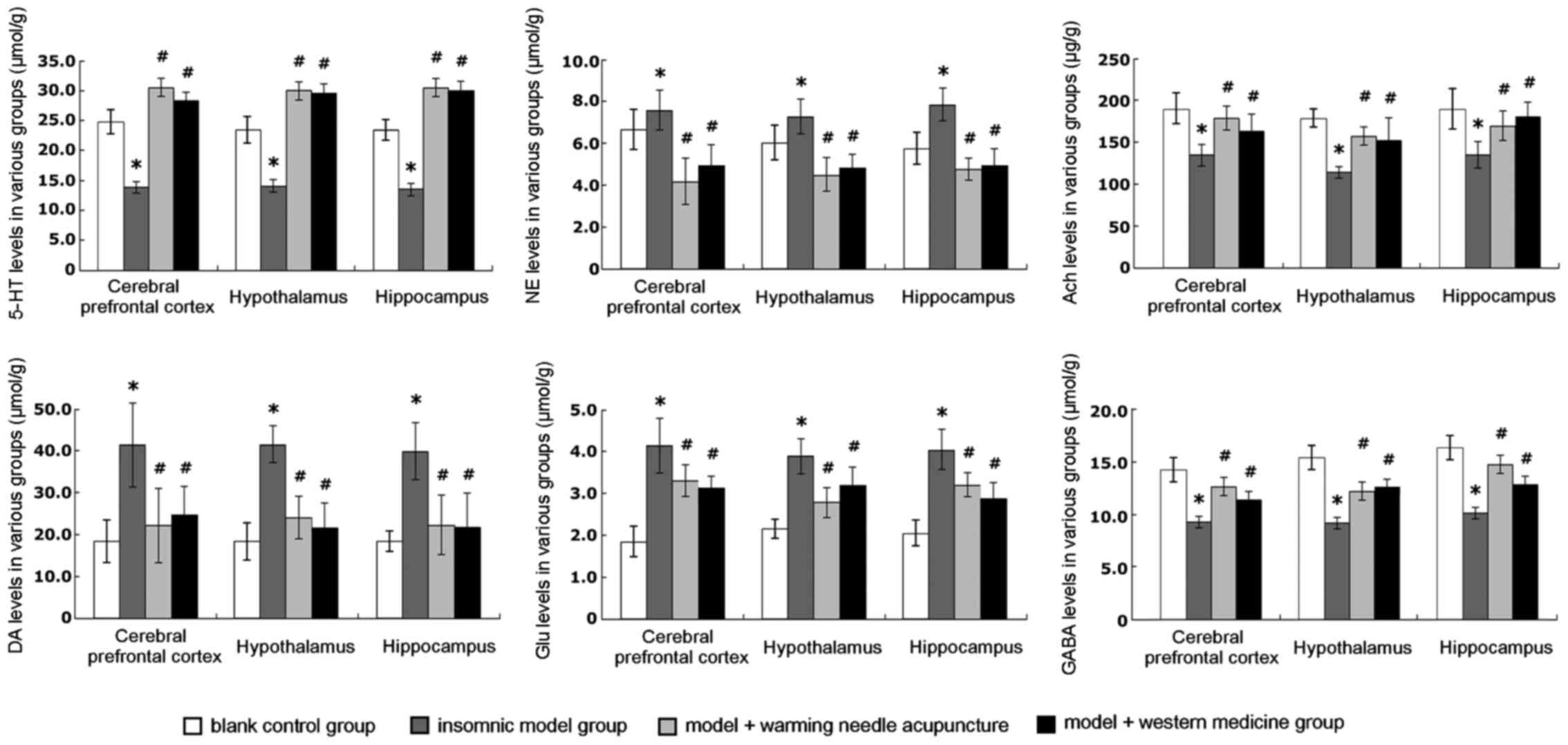|
1
|
Vgontzas AN, Fernandez-Mendoza J, Liao D
and Bixler EO: Insomnia with objective short sleep duration: The
most biologically severe phenotype of the disorder. Sleep Med Rev.
17:241–254. 2013. View Article : Google Scholar : PubMed/NCBI
|
|
2
|
e Silva JA Costa, Chase M, Sartorius N and
Roth T: Special report from a symposium held by the World Health
Organization and the World Federation of Sleep Research Societies:
an overview of insomnias and related disorders - recognition,
epidemiology, and rational management. Sleep. 19:412–416. 1996.
View Article : Google Scholar : PubMed/NCBI
|
|
3
|
Wang YM, Chen HG, Song M, Xu SJ, Yu LL,
Wang L, Wang R, Shi L, He J, Huang YQ, et al: Prevalence of
insomnia and its risk factors in older individuals: A
community-based study in four cities of Hebei Province, China.
Sleep Med. 19:116–122. 2016. View Article : Google Scholar : PubMed/NCBI
|
|
4
|
Han KH, Kim SY and Chung SY: Effect of
acupuncture on patients with insomnia: Study protocol for a
randomized controlled trial. Trials. 15:4032014. View Article : Google Scholar : PubMed/NCBI
|
|
5
|
Chen YS, Lu J, Su-Chao LM, Wu QZ, Tu Y and
Bo A: Effects of electro-warmed needle of inner-Mongolian medicine
on serum TNF-alpha, ACTH and corticosterone contents in fatigue
rats. Zhen Ci Yan Jiu. 33:258–261. 2008.(In Chinese). PubMed/NCBI
|
|
6
|
Lu J, Chen YS, A GL and Tu Y: Effects of
electric mildly-warmed needle of inner mongolian medicine on liver
MDA and GSH content, GSH-Px and SOD activity in fatigue rats. Zhen
Ci Yan Jiu. 32:167–169. 2007.(In Chinese). PubMed/NCBI
|
|
7
|
Kim TH and Jung SY: Mongolian
traditional-style blood-letting therapy. J Altern Complement Med.
19:921–924. 2013. View Article : Google Scholar : PubMed/NCBI
|
|
8
|
Bao HS: Research of Zhanbra Dorje's
contribution on the development of Mongolian medicine. Zhonghua Yi
Shi Za Zhi. 40:29–32. 2010.(In Chinese). PubMed/NCBI
|
|
9
|
Murray NM, Buchanan GF and Richerson GB:
Insomnia Caused by Serotonin Depletion is Due to Hypothermia.
Sleep. 38:1985–1993. 2015. View Article : Google Scholar : PubMed/NCBI
|
|
10
|
Si LG, Wang YH, Wuyun G, Bao LD and Bo A:
The effect of Mongolian medical acupuncture on cytokines and
neurotransmitters in the brain tissue of insomniac rats. Eur J
Integr Med. 7:492–498. 2015. View Article : Google Scholar
|
|
11
|
Sun X, Luo S, He Y, Shao Y, Liu C, Chen Q,
Cui S and Liu H: Screening of the miRNAs related to breast cancer
and identification of its target genes. Eur J Gynaecol Oncol.
35:696–700. 2014.PubMed/NCBI
|
|
12
|
Zhu X, Zhao H, Lin Z and Zhang G:
Functional studies of miR-130a on the inhibitory pathways of
apoptosis in patients with chronic myeloid leukemia. Cancer Gene
Ther. 22:573–580. 2015. View Article : Google Scholar : PubMed/NCBI
|
|
13
|
Marrelli M, Paduano F and Tatullo M: Human
periapical cyst-mesenchymal stem cells differentiate into neuronal
cells. J Dent Res. 94:843–852. 2015. View Article : Google Scholar : PubMed/NCBI
|
|
14
|
Yu E and Amri H: China's Other Medical
Systems: Recognizing Uyghur, Tibetan, and Mongolian Traditional
Medicines. Glob Adv Health Med. 5:79–86. 2016. View Article : Google Scholar : PubMed/NCBI
|
|
15
|
Safavi-Abbasi S, Brasiliense LB, Workman
RK, Talley MC, Feiz-Erfan I, Theodore N, Spetzler RF and Preul MC:
The fate of medical knowledge and the neurosciences during the time
of Genghis Khan and the Mongolian Empire. Neurosurg Focus.
23:E132007. View Article : Google Scholar : PubMed/NCBI
|
|
16
|
Bo A, Si L, Wang Y, Xiu L, Wu R, Li Y, Mu
R, Ga L, Miao M, Shuang F, et al: Clinical trial research on
Mongolian medical warm acupuncture in treating insomnia. Evid Based
Complement Alternat Med. 2016:61902852016. View Article : Google Scholar : PubMed/NCBI
|
|
17
|
Yundeng: Exploration of Mongolian
translation of The Four medical tantras (rGyud-bzhi). Zhonghua Yi
Shi Za Zhi. 1989:185–188. 1989.(In Chinese).
|
|
18
|
Erihenbatu: The Mongolian medical schools
and its exponents. Zhonghua Yi Shi Za Zhi. 18:108–112. 1988.(In
Chinese). PubMed/NCBI
|
|
19
|
Burenbatu BM, Borjigin M, Eerdunduleng,
Huo W, Gong C, Zhang G Hasengaowa, Longmei, Li M, Zhang X, et al:
Profiling of miRNA expression in immune thrombocytopenia patients
before and after Qishunbaolier (QSBLE) treatment. Biomed
Pharmacother. 75:196–204. 2015. View Article : Google Scholar : PubMed/NCBI
|
|
20
|
Riesco-Eizaguirre G, Wert-Lamas L,
Perales-Patón J, Sastre-Perona A, Fernández LP and Santisteban P:
The miR-146b-3p/PAX8/NIS regulatory circuit modulates the
differentiation phenotype and function of thyroid cells during
carcinogenesis. Cancer Res. 75:4119–4130. 2015. View Article : Google Scholar : PubMed/NCBI
|
|
21
|
Gottlieb DJ, Hek K, Chen TH, Watson NF,
Eiriksdottir G, Byrne EM, Cornelis M, Warby SC, Bandinelli S,
Cherkas L, et al: Novel loci associated with usual sleep duration:
The CHARGE Consortium Genome-Wide Association Study. Mol
Psychiatry. 20:1232–1239. 2015. View Article : Google Scholar : PubMed/NCBI
|
|
22
|
Srichomkwun P, Admoni O, Refetoff S and de
Vries L: A Novel Mutation (S54C) of the PAX8 Gene in a Family with
Congenital Hypothyroidism and a High Proportion of Affected
Individuals. Horm Res Paediatr. 86:137–142. 2016. View Article : Google Scholar : PubMed/NCBI
|
|
23
|
Arrigoni E and Saper CB: What optogenetic
stimulation is telling us (and failing to tell us) about fast
neurotransmitters and neuromodulators in brain circuits for
wake-sleep regulation. Curr Opin Neurobiol. 29:165–171. 2014.
View Article : Google Scholar : PubMed/NCBI
|
|
24
|
Paulson KL and Shay BL: Sympathetic
nervous system responses to acupuncture and non-penetrating sham
acupuncture in experimental forearm pain: A single-blind randomised
descriptive study. Acupunct Med. 31:178–184. 2013. View Article : Google Scholar : PubMed/NCBI
|















